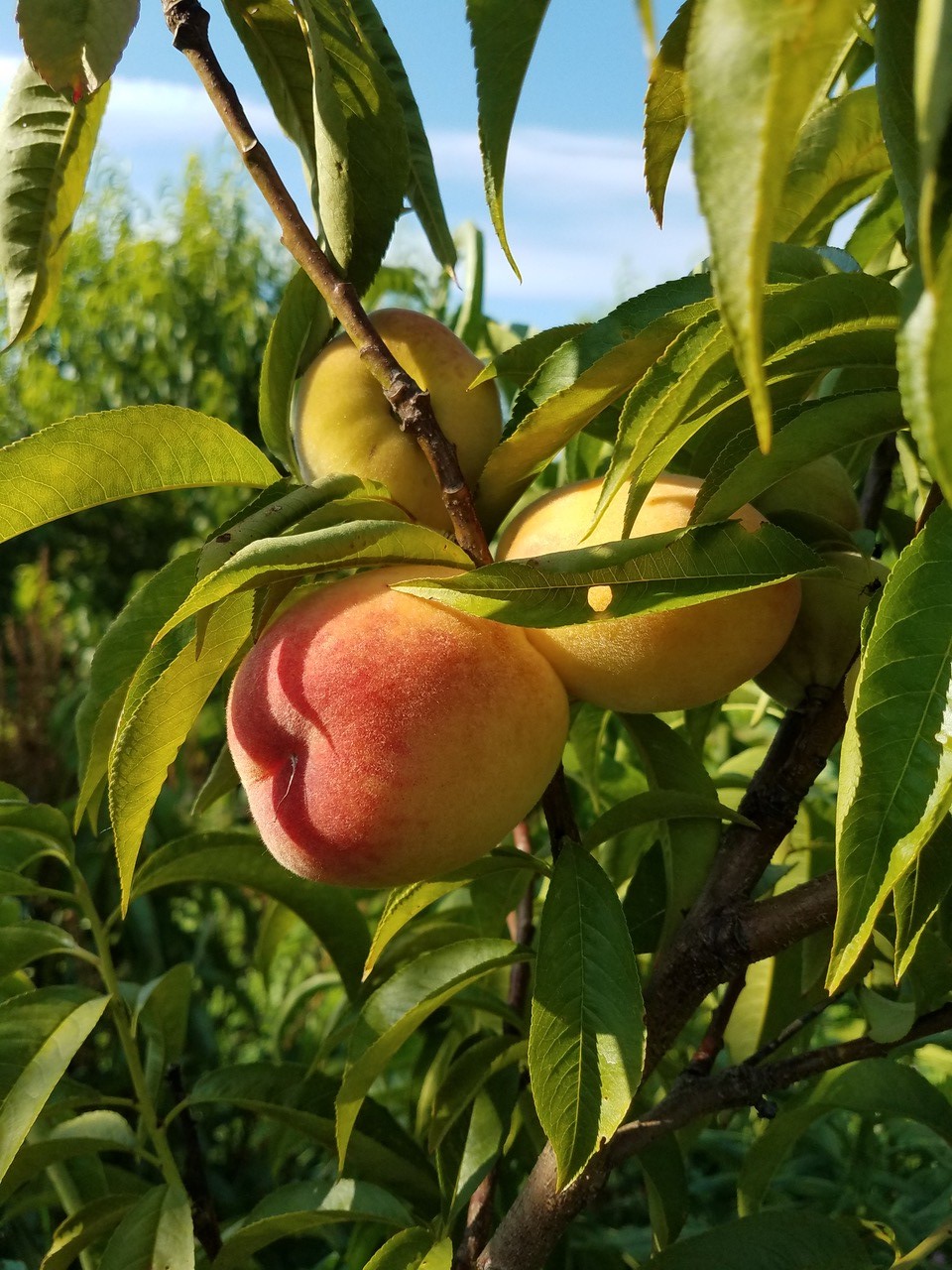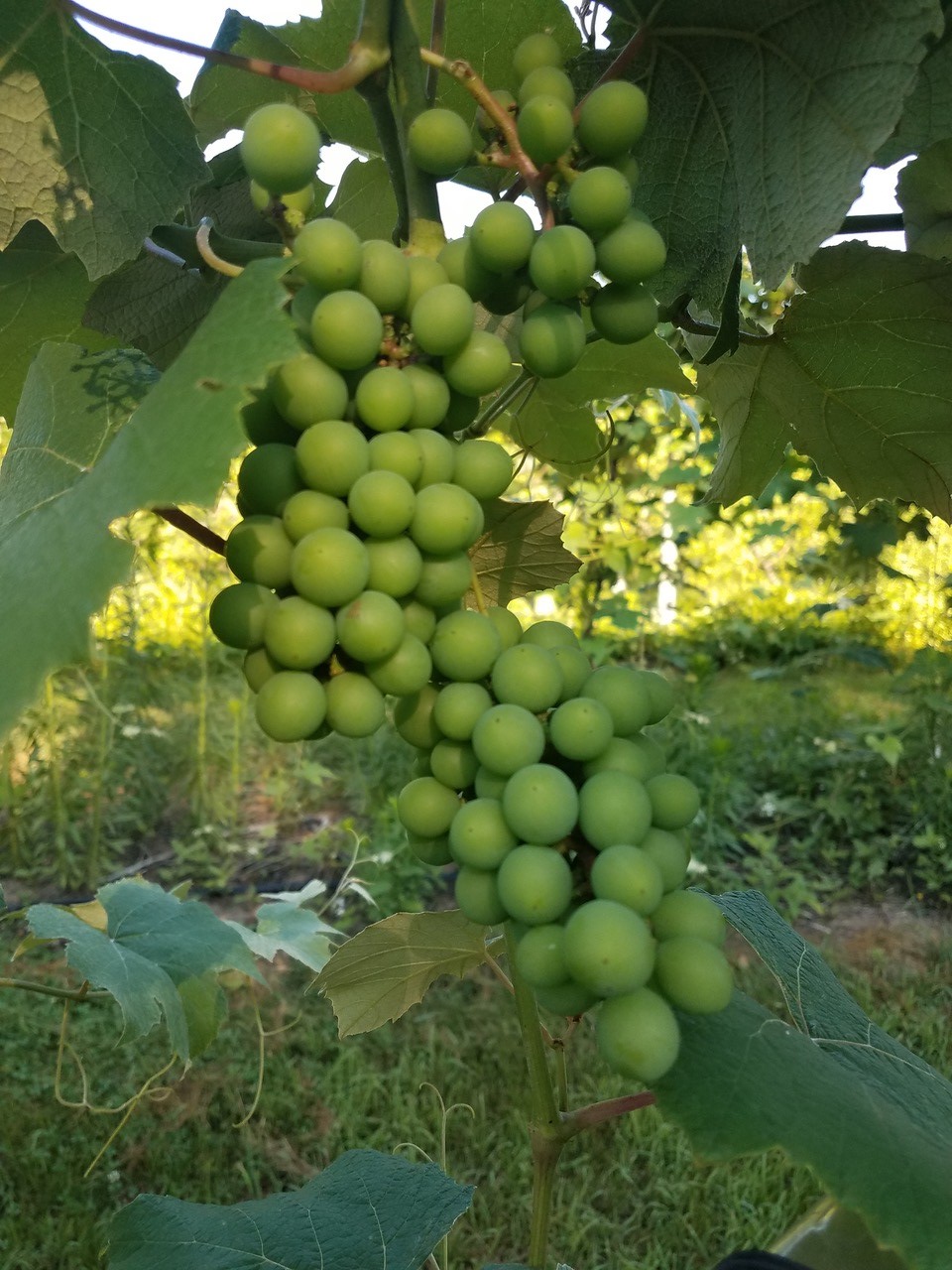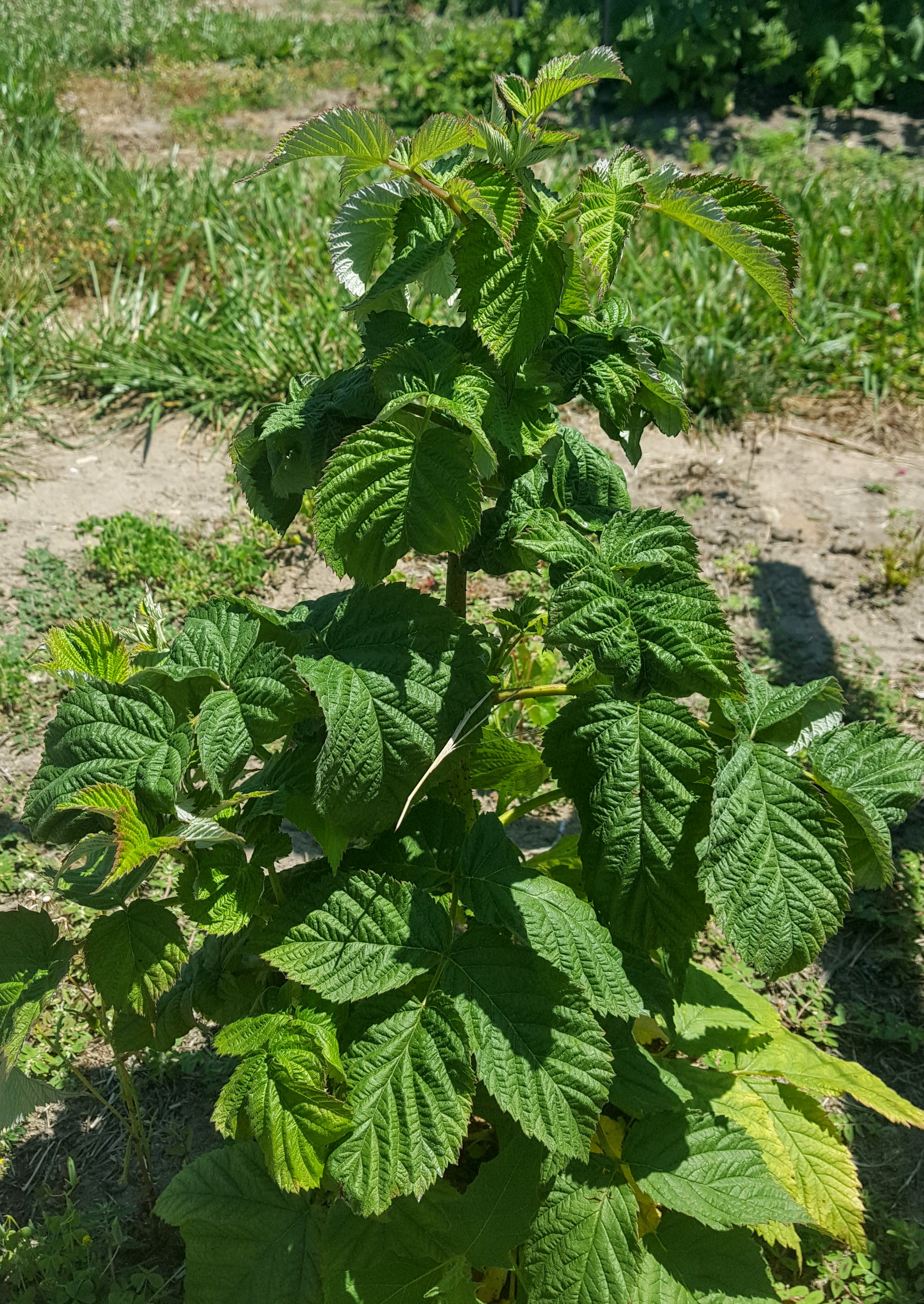Southwest Michigan fruit update – July 16, 2019
Hot weather and no rain have rapidly dried the soils. Summer fruit harvest is well underway with blueberries, cherries and raspberries

Weather
Last week’s weather was hot. High temperatures were in the 80s and 90s. Lows were generally in the 50s. Precipitation last week was spotty. Many locations had no rain. Some locations received storms which dropped from 0.1 to 0.5 inches. The regional average was 0.1 inch. Rainfall totals for the season remain about 12 to 18 inches across the region since April 1.
The forecast for this coming week is for hot and humid conditions, with highs in the 80s and 90s and lows around 70. The heat index will be near 100 most of the week. The best chances of rain are Tuesday and Wednesday.
Soils have dried out quickly. Evapotranspiration is about 0.20 inches of water a day and will be closer to 0.25 inches this week. Plants will be using about an inch of water every 4 days. Growers with irrigation should be using it.
With the hot temperatures, we continue to accumulate heat units quickly, about 190 growing degree days (GDD) base 42 and 141 GDD base 50. Our heat accumulation was actually lower than the week before because of lower humidity and lower temperatures at night. With the high humidity forecast for this week, we will move quickly.
|
Southwest Michigan GDD summary from March 1 – July 14, 2019 | |||
|---|---|---|---|
|
Station |
GDD 42 F |
GDD 45 F |
GDD 50 F |
|
Benton Harbor (SWMREC) |
1,868 |
1,583 |
1,168 |
|
Lawton (Lawton) |
1,914 |
1,627 |
1,206 |
|
Fennville (TNRC) |
1,707 |
1,435 |
1,041 |
|
Average for the SW region |
1,882 |
1,597 |
1,181 |
|
Accumulation last week |
189 |
171 |
141 |
The Southwest Michigan Research and Extension Center Enviroweather station leaf wetness sensor was faulty early this season and was replaced this month. If you need historical leaf wetness numbers for this season, get the data from the closest weather station to you.
Check out the new animated weather forecasts from Jeff Andresen at the weather tab in the Michigan State University Extension Fruit & Nuts Page. Articles and other regional reports can be found at the Fruit News page. There is no weather report this week.
Tree fruit
First catch and biofix for first generation oriental fruit moth was on May 6 (165 GGD base 45) at the Trevor Nichols Research Center. The second generation flight of oriental fruit moth is underway. Trap catch for oriental fruit moth has been high for two weeks. First trap catch and biofix of obliquebanded leafroller was June 14, and larvae should be feeding on the leaves. Scout for obliquebanded leafroller larvae in the growing shoot tips. Brown marmorated stink bug activity has been increasing, but summer adults are not expected to show up until approximately mid-August. Japanese beetle adults are becoming easier to find. Potato leafhoppers are feeding and causing hopper burn on sensitive plants.

Early season peach varieties are ripening. Oriental fruit moth is the primary insect pest at this time. This coming week’s heat will put additional stress on weak trees. Bacterial spot symptoms are becoming easier to see, with leaves yellowing and dropping.
Tart cherry harvest is winding down. Cherry leaf spot symptoms are easy to see in tart orchards. Post-harvest chlorothalonil applications help reduce late season leaf spot buildup without risk of resistance buildup. Cherry leaves are always susceptible to leaf spot, so management is needed to maintain a healthy leaf canopy during the entire season.
Ripening cherries are attractive to spotted wing Drosophila (SWD). Spotted wing Drosophila fly numbers are increasing as many wild fruits such as black raspberry, mulberry and bush honeysuckle, as well as cultivated fruit crops, are available for colonization. Trap catch of cherry fruit fly has been at low levels over the past three weeks.
Potential insect pests of plums are obliquebanded leafroller, codling moth and cherry and apple maggot. Spotted wing Drosophila is generally a problem of ripe plums.
Early season apple varieties fruit are coloring. Shoot and foliage growth has been lush and excessive foliage growth increases the potential for bitter pit in apple varieties prone to this disorder. Include calcium in your cover sprays to reduce bitter pit. Fire blight infections are still relatively rare. The Enviroweather sooty blotch and flyspeck model indicates that spray applications for these diseases may be necessary.
Larvae of codling moth, oriental fruit moth and obliquebanded leafroller are threats to developing fruit. Apple maggot flies have been caught in low numbers. The lack of rainfall and low soil moisture has delayed emergence. We expect this pest to emerge after 0.25 inch of rain. Monitoring is important for apple maggot, especially this year. Yellow sticky traps are used to track emergence of this fly and red sticky sphere traps plus attractive lures to monitor for adult female apple maggot.
Pear terminal growth is slowing, reducing the attractiveness of foliage to pear psylla. The first generation of codling moth is not a problem in hard pears.
Small fruit
Japanese beetles have emerged. There seem to be more than usual this year. We are catching more spotted wing Drosophila (SWD). Bush honeysuckle has lots of ripe red fruit right now. SWD uses this and other fruiting plants as hosts to quickly increase its populations. Place traps near early ripening wild fruit so you have an idea of the local population. Monitor your fields and wild fruit near your field for this pest and be prepared to spray to protect ripening fruit (see “Plan to change when dealing with spotted wing Drosophila”). Potato leafhopper adults are feeding and sensitive crops should be protected.

Grapes have buckshot-sized berries in wine grapes. Juice grapes are at berry touch in the cluster. This is your last opportunity to get a fungicide active on botrytis into the interior of the fruit cluster to reduce the disease later in the season. It has been about five weeks since bloom and we are nearing the end of the critical post-bloom spray window to control diseases on fruit. Growers use a mix of fungicides to control all the major grape diseases—downy mildew, phomopsis, powdery mildew and black rot—which can infect rapidly growing green berries. Downy mildew, black rot on the berries and phomopsis on the leaves and stems can be found in vineyards now.
Grape berry moth sprays should have been applied now to control the larvae. Bloom in wild grapes is used to set the grape berry moth model on Enviroweather and determine the spray timing for treating the second and third generations. Wild grape bloom about May 31 in southwest Michigan. Controls are targeted for 810 GDD50 after bloom in wild grapes. We are currently at about 1,000 GDD and insecticidal sprays for the second generation should have been applied last week.
.jpg)
Blueberry harvest of early varieties continues. Bluecrop harvest has begun. We have not received much rain in the last two weeks and many growers are irrigating their fields. This week, the water use will be close to 0.25 inch of water a day. For a shallow rooted plant in sandy soils, this means the soil water can be depleted in a matter of a few days (see “Irrigating Michigan blueberries”).
Mummy berry fruit are easy to find in some fields. There is no treatment at this time since the fruit infection occurred during bloom. Shoot collapse due to phomopsis is relatively common. With the hot weather, the brightly colored leaves of mosaic virus are easy to see. Blueberry maggot adults have been trapped and protectant sprays should be applied. SWD numbers are increasing. Most of our SWD traps are catching flies, so growers who are not trapping their fields should be protecting their fruit.
Strawberry harvest from matted row plantings has ended. Growers are renovating their fields. After renovation, irrigate the fields as quickly as possible to get the plants started. After the leaves emerge, treat with a material to control potato leafhopper to prevent this pest stunting the plants.

Raspberry and black raspberry harvest continues. Japanese beetles are out and feeding on raspberry leaves. Raspberries and blackberries are very attractive to SWD and fruit needs to be protected from this pest. Potato leafhopper are feeding on raspberries and some susceptible varieties respond with crinkling and rolling up of young leaves.
Related articles
- Southwest Michigan fruit update – July 9, 2019
- Michigan spotted wing Drosophila update – July 9, 2019
- Plan to change when dealing with spotted wing Drosophila
- MSU vineyard IPM scouting report – July 3, 2019
- Managing Japanese beetles in fruit crops
- Disease control in grapes critical during and after bloom
- Irrigating Michigan blueberries
- SWD Management Recommendations for Michigan Blueberry
- Strawberry renovation is due soon
- Spotted Wing Drosophila Management Recommendations for Michigan Raspberry and Blackberry Growers



 Print
Print Email
Email




